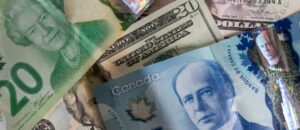Forex Slippage vs. Spread: What’s the Difference?
When it comes to trading forex, it’s crucial to understand the concepts of slippage and spread. These two terms are often used interchangeably, but they represent distinct aspects of trading that every forex trader should be aware of. In this article, we will delve into the differences between forex slippage and spread, and why understanding them is essential for successful trading.
What is Forex Slippage?
Forex slippage refers to the difference between the expected price of a trade and the actual price at which the trade is executed. In other words, it is the discrepancy between the price a trader wants to enter or exit a trade and the price at which the broker fills the order.
Slippage can occur for various reasons, but it is most commonly observed during periods of high volatility or low liquidity. During these times, the market moves rapidly, and the available liquidity may not be sufficient to fill orders at the desired price.
For example, let’s say a trader wants to buy a currency pair at $1.2000. However, due to slippage, the trade is executed at $1.2005 instead. This means the trader experiences a slippage of 5 pips.
Slippage can be both positive and negative. Positive slippage occurs when an order is filled at a better price than expected, resulting in a lower entry price for a buy trade or a higher exit price for a sell trade. Negative slippage, on the other hand, happens when an order is filled at a worse price than anticipated, leading to a higher entry price for a buy trade or a lower exit price for a sell trade.
Slippage can significantly impact trading results, especially for traders who rely on precise entry and exit points. Therefore, it is crucial to choose a reputable broker that can minimize slippage and execute trades as close to the desired price as possible.
What is Spread?
Spread, on the other hand, refers to the difference between the bid and ask prices of a currency pair. It is essentially the cost of trading forex and is typically measured in pips. The bid price is the price at which a trader can sell a currency pair, while the ask price is the price at which a trader can buy a currency pair.
For example, if the bid price for EUR/USD is 1.2000 and the ask price is 1.2002, the spread is 2 pips. This means a trader would need the currency pair to move at least 2 pips in their favor to break even on a trade.
The spread is the primary way brokers make money in the forex market. They offer traders the ability to trade at the bid or ask price, but they always execute trades at a slightly worse price than the current market price. This difference between the market price and the executed price is what constitutes the spread.
It’s important to note that spreads can vary significantly between brokers and currency pairs. Major currency pairs such as EUR/USD and GBP/USD typically have lower spreads due to their high liquidity, while exotic currency pairs tend to have wider spreads due to their lower trading volumes.
Understanding the differences
While both slippage and spread involve price discrepancies, they occur in different contexts and have distinct implications for forex traders.
Slippage is an execution issue that arises when the market moves rapidly, and orders cannot be filled at the desired price. It can impact trading results by either improving or worsening the entry or exit price of a trade. To minimize slippage, traders should choose brokers with fast execution speeds and deep liquidity.
On the other hand, spread is a cost that traders incur with every trade. It is the difference between the bid and ask prices and is paid to the broker. Traders should be mindful of the spreads offered by different brokers and consider them when determining their trading strategies.
In conclusion, forex slippage and spread are two important concepts that every trader should understand. Slippage refers to the discrepancy between the expected and executed prices of a trade, while spread represents the difference between the bid and ask prices. By being aware of these factors, traders can make more informed decisions and manage their risks effectively in the forex market.













